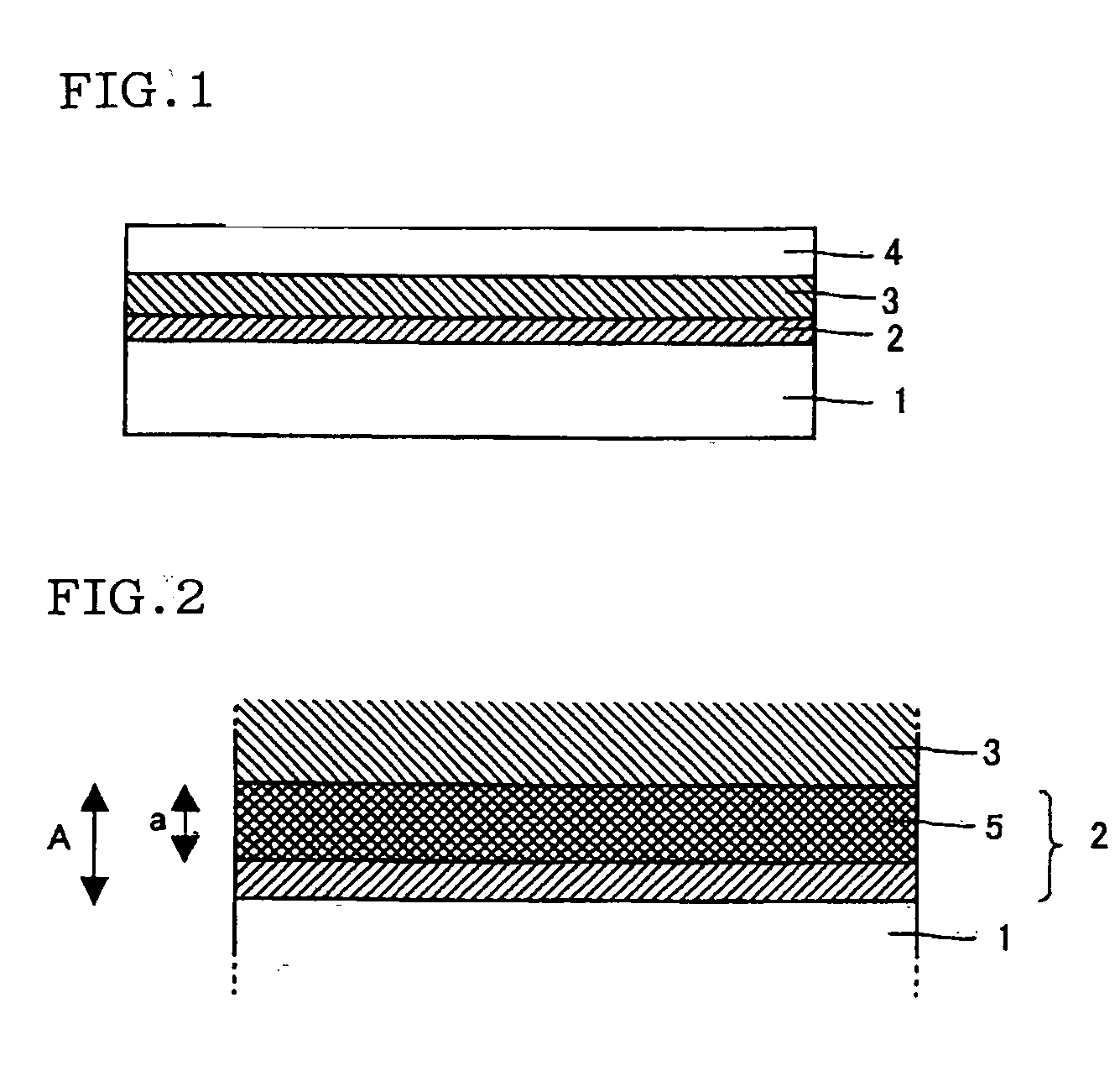Pressure sensitive ashesive optical film and image viewing display
a technology of optical film and ashesive, applied in the direction of instruments, polarising elements, synthetic resin layered products, etc., can solve the problems of reducing display quality, affecting display quality, and lagging of pressure sensitive adhesive in the contact portion
- Summary
- Abstract
- Description
- Claims
- Application Information
AI Technical Summary
Problems solved by technology
Method used
Image
Examples
example 1
(Production of an Optical Film)
After a polyvinyl alcohol film with a thickness of 80 μm was stretched 5 times in 40° C. iodine aqueous solution, it was dried for 4 minutes at 50° C. to obtain a polarizer. Triacetyl cellulose films were adhered on both sides of this polarizer through a polyvinyl alcohol based adhesive to obtain a polarizing plate.
(Formation of Anchor Layer)
As a polyethylene imine, EPOMIN P1000 by NIPPON SHOKUBAI Co., Ltd. was used, and this was dissolved in a mixed solvent of water: isopropyl alcohol=1:3 (volume ratio) to prepare a diluted solution with a solid content of 0.2%. This solution was applied on the polarizing plate using a wire bar #5, and, subsequently volatile matter was evaporated off. The obtained anchor layer formed of residual polyethylene imine gave 25 nm of thickness.
(Formation of a Pressure Sensitive Adhesive Layer)
As a base polymer, a solution (30% of solid content) including an acrylic polymer of a weight average molecular weight 2,0...
example 2
(Production of an Optical Film)
A solution obtained by dissolving flakes of a polycarbonate (PC) in methylene chloride was uniformly cast on a smooth SUS board, and the obtained board was dried in a solvent atmosphere so that the surface might not have dew formation. The obtained PC film was removed from the SUS board after sufficient drying, and then dried in a circulating hot air type oven to obtain a non-stretched film of PC (30 μm). This film was stretched by 1.2 times while being heated, and corona treatment was given to obtain a PC retardation plate (73° of angle of contact with water).
(Production of a Pressure Sensitive Adhesive Optical Film)
Except for having used the retardation plate as an optical film in Example 1, a same method as in Example was repeated to form an anchor layer. Moreover, a releasing film having a same pressure sensitive adhesive layer as in Example 1 currently formed thereon was attached to produce a pressure sensitive adhesive retardation plate.
example 3
(An Optical Film)
Corona treatment was given to a retardation plate (100 μm) using a biaxially stretched norbornene based resin (manufactured by JSR, Arton) (71° of angle of contact with water), and the obtained plate was used.
(Formation of an Anchor Layer)
EPOMIN P1000 manufactured by NIPPON SHOKUBAI Co., Ltd. was dissolved in a mixed solvent of water:isopropyl alcohol=2:1 (volume ratio), and then diluted to prepare a diluted solution with a solid content of 1%. After this solution was applied on the retardation plate using a wire bar #5, volatile matter was evaporated off. A thickness of an anchor layer formed of the polyethylene imine after evaporated gave about 150 nm.
(Production of a Pressure Sensitive Adhesive Optical Film)
To the anchor layer formed on a surface of the retardation plate, a releasing film having a same pressure sensitive adhesive layer as in Example 1 currently formed was attached to produce a pressure sensitive adhesive retardation plate.
PUM
| Property | Measurement | Unit |
|---|---|---|
| Thickness | aaaaa | aaaaa |
| Fraction | aaaaa | aaaaa |
| Volume | aaaaa | aaaaa |
Abstract
Description
Claims
Application Information
 Login to View More
Login to View More - R&D
- Intellectual Property
- Life Sciences
- Materials
- Tech Scout
- Unparalleled Data Quality
- Higher Quality Content
- 60% Fewer Hallucinations
Browse by: Latest US Patents, China's latest patents, Technical Efficacy Thesaurus, Application Domain, Technology Topic, Popular Technical Reports.
© 2025 PatSnap. All rights reserved.Legal|Privacy policy|Modern Slavery Act Transparency Statement|Sitemap|About US| Contact US: help@patsnap.com

